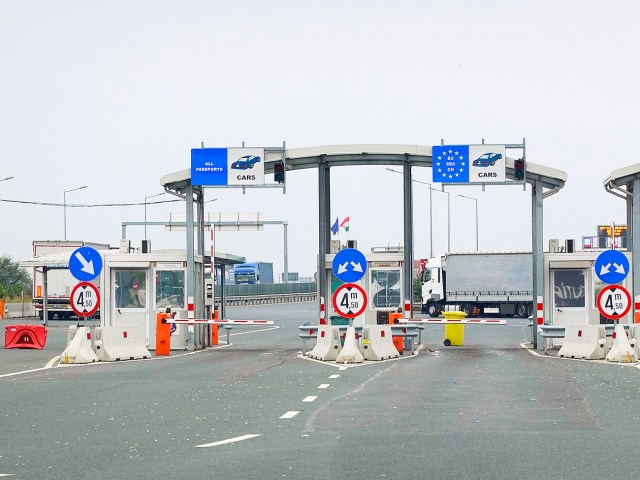Headed across the pond soon? A number of changes could affect those travelers planning a European vacation. While these proposed changes are mostly procedural and shouldn’t affect a traveler’s eligibility to visit, it’s always wise to remain abreast of new rules to be sure you’ve made the correct preparations for your trip. Here are a few of the major differences that look likely to impact U.S. travelers over the coming months.
Get Ready for Electronic Entry and Exit Checks

Some countries, such as the United States, already collect biometric data from incoming travelers to help with the process of border security. The European Union plans to follow suit, though as of May 2024, an exact timeframe for implementation has yet to be announced. Recent reports suggest that it could be introduced at some point in 2024.
The system, called the Entry/Exit System (EES), will be an automated electronic system for registering non-EU nationals. It’s hoped that the streamlined procedures will speed up the processing of passengers and reduce wait times at border checkpoints. There are certain exemptions and variations, so be sure to read the FAQs before you travel to find out if they apply to you.
Currently, 29 countries have signed up to join the program — including most of the EU nations and also countries such as Iceland, Norway, Liechtenstein, and Switzerland. The Republic of Ireland and Cyprus, though members of the EU, have said they intend to continue stamping passports manually. The United Kingdom, no longer a member of the EU, will also remain with its current system.
If you travel to Europe frequently or for extended periods, be sure to keep count of your stays so that you don’t exceed the 90-day maximum stay during any 180-day period. The total is calculated for all EES countries and is not tallied separately, so if you overstay for one, you’ve overstayed for all.
Bulgaria and Romania Join the Schengen Zone (With a Caveat)

The Schengen Agreement was a 1995 treaty signed by five countries: France, Germany, Belgium, the Netherlands, and Luxembourg. They agreed to form an area without internal border controls. Over time, other nations have signed up, and now around 400 million people live within the so-called Schengen Zone.
Broadly speaking, it means once travelers have been allowed into one of the Schengen countries, they can move freely from country to country without encountering additional checks. As a response to temporary issues of national security, however, countries are permitted to reintroduce border checks and, there are currently a number of these in place.
In April 2024, Bulgaria and Romania were welcomed into the Schengen club — with one significant caveat. The two countries will operate in the same way as other Schengen members for those arriving by air or by sea. However, if you cross into these countries via a land border, passport checks will continue as before.
The ETIAS Visa-Waiver Program Looks Set for a 2025 Launch

Since 2009, the U.S. has required eligible travelers visiting from visa-waiver countries to fill out an Electronic System for Travel Authorization (ESTA). The EU looks likely to follow suit at some point in 2025. For short-term visitors intending to stay for no more than 90 days in any 180-day period, the ETIAS (European Travel Information and Authorization System) will work in a similar way.
Applicants will fill out an online form ahead of travel, and most will get their documentation almost immediately. It is expected that the ETIAS will cost 7 euros and that the fee will be waived for those under 18 years of age and those over 70 years old. When approved, the ETIAS will be valid for three years or until your passport expires, whichever is sooner.
Upon arrival, border officials will still check your travel documents to make sure they are valid and may ask certain questions before you’re permitted entry — including the purpose of your visit, details of your accommodation, and whether you have enough money to support yourself for the duration of your trip. Largely, such information is gathered so that the border official can be satisfied you are not intending to enter the country to stay and work.
When it comes into effect, visa-exempt travelers from qualifying countries like the U.S. will need one ETIAS to visit all European countries covered by the scheme. These include the Schengen Zone countries, which are largely EU members, plus nations such as Iceland, Norway, Liechtenstein, and Switzerland. Notable ETIAS exceptions include the United Kingdom, Ireland, Cyprus, Montenegro, Serbia, Gibraltar, and Albania.
Liquids Rules Have Changed at Some Airports

A policy restricting the size of liquids travelers can carry through airport security has been in effect worldwide since 2006. However, the need to enforce this rule can be time-consuming and lead to lengthy queues which, of course, are unpopular with passengers.
Good news: Thanks to 3-D scanners and improved X-ray screening equipment, some European airports have ditched this requirement. These include Amsterdam’s Schiphol Airport, Ireland’s Shannon Airport, Helsinki Airport in Finland, Fiumicino Airport in Rome, and London City Airport (though the rollout is delayed at Heathrow, Gatwick and Stansted).
More airports are scheduled to do the same. Among those trialing the new technology or planning to implement it by the end of 2024 are Madrid’s Barajas Airport, Barcelona’s El Prat Airport, Geneva Airport, and Paris Orly Airport. If you intend to fly soon, make sure that you check the current situation for the airport you’ll be transiting.
Tourism Taxes Are Ramping Up in Some Locations

Following some high-profile campaigns to combat overtourism, a number of European cities have implemented charges in the form of tourist “taxes” in an attempt to tackle the issue. For instance, in Venice, Italy, the city authorities will impose a daily charge of five euros on certain dates from April to July 2024. The move aims to minimize the negative impacts of day trippers to the historic city core. For anyone staying overnight, a tourist tax is already levied as part of the cost of their stay.
In other cities, such as Dubrovnik, Croatia, the focus of tourists tends to center on one popular attraction — in this case, the ancient walls that enclose its old city. In a bid to reduce the number of tourists, visitors will now pay a staggering 35 euros to walk them, a five-fold increase since 2007. Meanwhile, since September 2023, there has been a strictly enforced cap on visitor numbers to the Acropolis in Athens, Greece — advance purchase tickets for a specific time are now required. Expect more of the same across Europe as tourism numbers continue to grow.
More from our network
Daily Passport is part of Optimism, which publishes content that uplifts, informs, and inspires.























